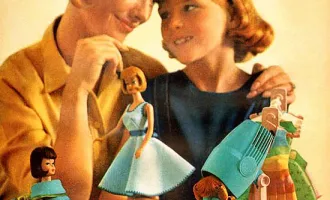Prescription Drugs: Going Behind the Price Tag
Imagine walking into the grocery store, heading down the cereal aisle, and finding that the price of your favorite granola had gone up … 50-fold. While that fortunately is not common occurrence at your local Trader Joe’s, it is similar to what happened to a prescription drug called Daraprim, which recently saw its price tag skyrocket from $13.50 to $750 per pill. For background, Daraprim is used to treat toxoplasmosis, a common but usually asymptomatic parasitic infection that can become life threatening in AIDS patients.
The backlash against Daraprim’s manufacturer Turing Pharmaceuticals, and particularly against its CEO Martin Shkreli, was massive. Even rival presidential candidates Donald Trump and Hillary Clinton agreed in condemning Shkreli’s actions. Although Turing Pharmaceuticals bowed to pressure and agreed to lower the price, it is still worth considering what allowed the price of a lifesaving drug to skyrocket in the first place. It turns out that, as with many parts of the US healthcare system, the process of determining a drug’s price is anything but simple.
Let’s start by going back to the cereal aisle to examine the free-market forces that impact the pricing of your favorite granola. The manufacturer – let’s say Granola Inc. – incurs a certain cost to make its product and wants to make as large a profit as possible. Luckily for consumers, competition between other similar products can be expected to keep prices in check. Additionally, the supermarket has leverage to negotiate for a lower price, since it stocks a lot of product on its shelves.
It turns out that the market for drugs bears little resemblance to the granola economy. For starters, drugs are vastly more expensive to develop than cereal. Even with today’s advanced drug screening tools, a pharmaceutical company may need to examine thousands of drug candidates to find one proves effective and safe enough to reach the market. The whole development process can cost well over a billion dollars per drug that gains final approval from the US Food and Drug Administration (FDA). The newer wave of more complex polypeptide drugs like insulin analogs and monoclonal antibodies are even more expensive to develop and manufacture.
Even though an individual pill that finds its way into a patient’s hand may cost only pennies to make, drugmakers price it in a way that will recoup the development cost in addition to funding drug marketing and ongoing research and development (R&D). In addition to covering R&D costs, drugmakers are looking to make a tidy profit. For example, out of the $50 billion the pharmaceutical company Pfizer accrued in sales during 2014, 47% ($23 billion) covered marketing, administration, and profit, while only 17% ($8 billion) funded R&D.
Another quirk of the drug market is the frequent lack of competition to keep prices down. To help pharmaceutical companies recoup development costs, laws in the US and most other countries grant new drugs exclusive patent protection for twenty years. Given the length of the drug testing and approval process, this generally means about ten years of patent protection once the drug reaches the market. With no other companies allowed to field copycat products during this period, companies tend to charge as much as they think the market will bear. The results can be striking. A groundbreaking new class of injectable drugs for LDL cholesterol lowering, poised for use by millions of patients in the US, has been priced at around $15,000 per patient per year by manufacturers Sanofi/Regeneron and Amgen. The newest “immuno-oncology” drugs have price tags well above $100,000 per course of therapy, prompting protests amongst the oncology community.
Even after a drug’s patent period expires and a drug goes “generic” (the term used for an off-patent drug), the barriers to entry for prospective competitors are formidable enough that sometimes no cheaper alternatives materialize. Requesting approval from the FDA to market a generic competitor in the US is a lengthy and expensive process, even for drugs that have been approved in other developed countries. The toxoplasmosis drug Daraprim is well beyond its patent-protected phase and is still available cheaply in other countries. In purchasing Daraprim’s rights and raising its price in the US, Martin Shkreli and his company were simply betting that no other company would develop a competing generic given the existing hurdles.
If consumers can’t expect competition to keep drug prices down, can they at least negotiate directly with drug companies to get a better deal? Large purchasers typically have a lot of leverage over their suppliers; this is how major retailers like Walmart keep prices so low. One would expect that Medicare, the largest healthcare payer in the US, could negotiate sizable discounts for the drugs it purchases for its beneficiaries. However, US law actually forbids Medicare from negotiating with pharmaceutical companies on drug prices, costing the government an estimated $15 billion excess per year.
Private US payers (think companies like Cigna or Aetna) do negotiate with drugmakers, but their leverage is limited by the fact that beneficiaries – who are consuming the drug but not paying for them – expect many drugs to be covered regardless of the price. This expectation ties into the concept of “moral hazard,” which states that people are more likely to use a resource if they are not the ones directly paying for it. Of course, the biggest losers in the current scheme are the already-vulnerable patients without insurance, who don’t have as much negotiating power and therefore pay higher per-person prices than private insurers.
The lack of real consumer leverage on drug prices in the US leads to large disparities between what we pay and what payers in other countries pay for the exact same drug. For example, Gilead’s new hepatitis C drug Sovaldi costs $84,000 per course of treatment in the US but only $46,000 in Germany.
In short, the granola market could only become like the US prescription drug market if granola were heavily regulated, one company held a monopoly over the industry, and that company could set whatever price it wanted without reducing demand. If the current system is so dysfunctional, why has nothing been done about it?
For one, the pharmaceutical industry uses part of its large profits to support a massively powerful lobby that can block most draft legislation not to its liking. This is the primary reason why the final draft of the Affordable Care Act contained little in the way of prescription drug cost cutting. But this isn’t just about vilifying the pharmaceutical industry. It is undeniable that drug prices support an enormous amount of science. Without the promise of an eventual payout, drug companies may not have invested billions to develop the new wave of “biologics” that are revolutionizing treatment for a wide range of diseases. As the pharmaceutical industry points out, sharp efforts to clamp down on drug costs across the board could stifle investments in R&D. Even so, for every billion dollars of sales that companies today funnel into science, billions more support drug marketing and profit margins.
It is increasingly apparent that the high cost of prescription drugs is simply not sustainable in the context of exploding overall healthcare costs. One solution is to allow Medicare to negotiate lower drug prices, or to at least switch to a Medicaid-like system in which drugmakers are required by law to provide certain discounts.
Another option would allow the import of drugs from other countries or grant “reciprocal” drug approval if a drug is approved in another country. Cost sharing (i.e. co-pays) reduces moral hazard, although – as UCSF Assistant Professor Dr. Ari Hoffman points out – it could result in patients forgoing necessary care.
Legislative efforts could improve the accountability of how drug sales income is reinvested, perhaps even prompting a rebate to payers if R&D spending falls below a certain threshold. Finally, a greater focus on value (à la comparative effectiveness analyses conducted by organizations such as the UK’s NICE) could ensure that the drugs we pay a premium for deliver real benefits. Tens of thousands of dollars might actually be worth it for a drug that cures a devastating disease or reduces costly complications, but a six-figure price tag for a cancer drug that extends life by three months may be a tougher sell.
Buying a prescription drug is never going to be quite as simple as picking up a box of granola, nor should we expect it to be. Still, patients have a right to a system that works better than the one that exists today – one that does not take advantage of a captive market in dire need of better value for vital medicines.


